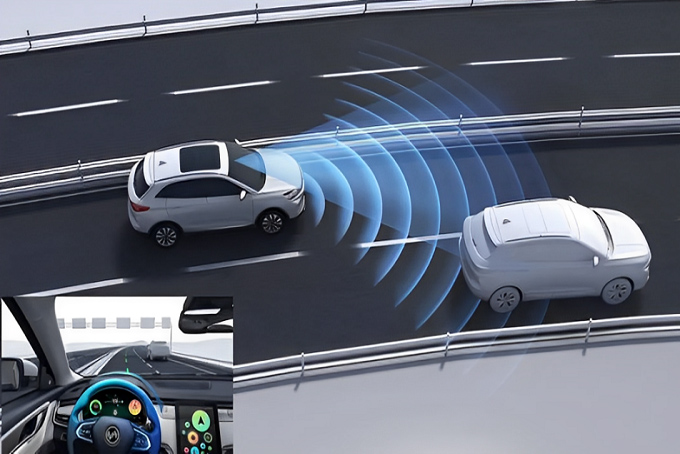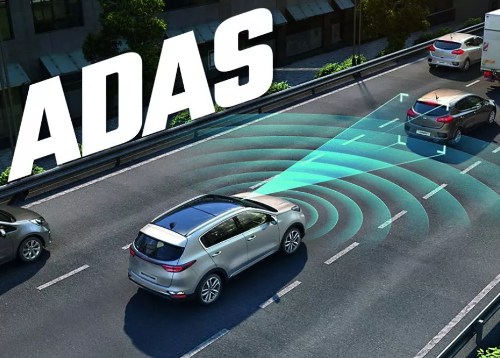How Do ADAS Camera Lenses Enhance Vehicle Safety and Vision?
Jun 05, 2024
Introduction to ADAS:
The Advanced Driver Assistance System (ADAS) is a sophisticated technology that integrates a variety of sensors within a vehicle to perceive the surrounding environment and collect data. These sensors encompass cameras, radars, lidars, and ultrasonic sensors, which monitor variables such as light, heat, and pressure. Typically, they are installed on the vehicle's front and rear bumpers, side mirrors, steering column, or windshield. ADAS uses navigation map data to compute and analyze information, predicting potential hazards to enhance driving comfort and safety. Early ADAS technology primarily relied on passive alarms that alerted drivers to potential dangers by issuing warnings for abnormal vehicle or road conditions.
Working Principle of ADAS
ADAS operates by sensing the environment through sensors and processing data in real-time. It can identify, detect, and track both static and dynamic objects, offering an intuitive driving experience. For instance, when a vehicle approaches an obstacle, the system provides auditory or visual warnings to alert the driver. Additionally, ADAS can assist with lane keeping, automatic speed control, distance maintenance, and automatic braking, reducing driver fatigue and enhancing safety.
Beyond improving the driving experience and safety, ADAS aids drivers in better understanding vehicle performance and status. It offers real-time data on fuel consumption, speed, and navigation, and can automatically record the vehicle's trajectory for troubleshooting and maintenance.
The Importance of Car Camera Lenses in ADAS
Car Camera lenses play an indispensable role in ADAS as the primary visual sensors, collecting visual data of the vehicle's surroundings. Here's an analysis of their role and future development trends:
Roles:
1. Environmental Perception: Car camera lenses capture images of roads, pedestrians, vehicles, traffic signs, etc., aiding ADAS in environmental awareness.
2. Dynamic Monitoring: ADAS lenses monitor dynamic conditions ahead, such as lane departures, pedestrian crossings, and approaching vehicles.
3. Image Processing: Processed images enable functionalities like lane-keeping assistance, forward collision warning, and traffic sign recognition.
4. Decision Support: ADAS camera lenses provide critical visual data for ADAS decision-making processes, including adaptive cruise control and automatic emergency braking.
5. Driver Monitoring: Some ADAS camera lenses monitor driver behavior and status for fatigue or inattention alerts.
Future Development Trends:
1. Higher Resolution: Future ADAS camera lens will offer higher resolution images to improve object and scene recognition accuracy.
2. Night Vision Capability: Enhanced ADAS camera lens technology will ensure safe night driving with improved imaging in low-light conditions.
3. Integration of Deep Learning: The application of deep learning will allow car camera lenses to better understand and interpret visual data, increasing ADAS intelligence.
4. Multi-Camera Systems: Vehicles may feature multiple camera lens for 360-degree surveillance, forming a surround-view system.
5. Integration with Radar and Lidar: Car camera lens will be integrated with millimeter-wave radars and lidars to form multi-sensor fusion systems, enhancing ADAS performance and reliability.
6. Real-Time Data Processing: With increased in-vehicle computing power, real-time data processing will enable immediate responses.
7. Standardization and Regulatory Drive: As autonomous driving technology and regulations evolve, ADAS camera lenses performance standards will become stricter and more unified.
8. Cost-Effectiveness: Maturity and mass production of technology will reduce ADAS camera lens costs, leading to broader application across various vehicle models.
Wintop Optics ADAS Camera Lenses:
Wintop Optics, a leading manufacturer in the optical lens industry, offers a range of ADAS camera lenses designed to meet the stringent requirements of modern vehicular safety systems.
YT-7591-D1
OV2775(1920*1080)
DFOV:68°
HFOV:57°
VFOV:32°
YT-7598-C1
IMX462(1920*1080)
DFOV:63°
HFOV:54°
VFOV:30°
YT-7605-C1
OX03C10(1920*1200)
DFOV:124°
HFOV:106°
VFOV:66°
YT-7610-C1
IMX307(1920*1080)
DFOV:72°
HFOV:61°
VFOV:33°
In conclusion, as ADAS technology continues to evolve, the role of ADAS camera lenses becomes increasingly pivotal. Wintop Optics is at the forefront, providing high-quality lenses that enhance the safety and experience of driving. With a commitment to innovation and excellence, Wintop Optics is the partner of choice for the automotive industry's vision needs.
In the realm of optics, online searches can't replace the value of direct, in-depth, and customized application support we offer. Complete the brief form to contact us, and we'll have a certified lens application specialist reach out to provide you with one-on-one assistance.

